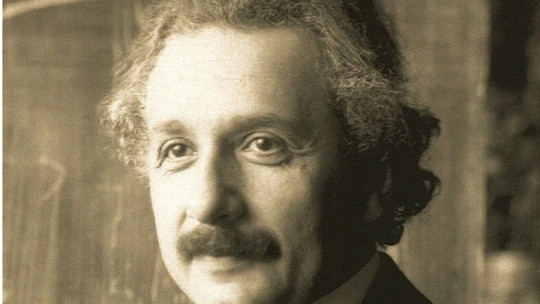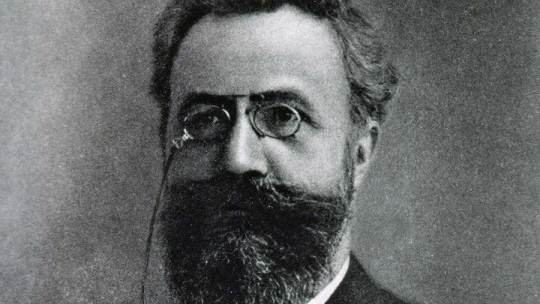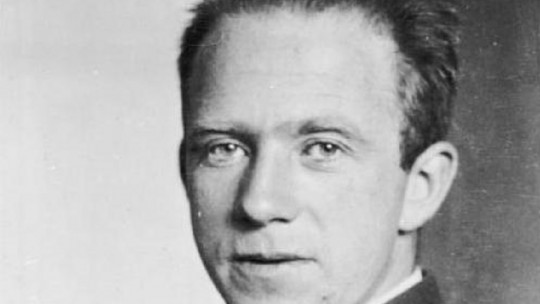Hermann von Helmholtz is one of the most important researchers in the history of modern science. Renowned in his native Germany and famous throughout the world, this scientist contributed enormously to all types of fields of knowledge.
Physiology, mechanics, chemistry, physics, and even psychology were disciplines to which von Helmholtz contributed in one way or another. In fact, it is thanks to being the tutor and inspiration of Wilhelm Wundt that the first empirical psychology laboratory was able to be developed.
Next We will discover the life of this researcher through a biography of Hermann von Helmholtz which people he influenced, his contributions and major works, and the honors he received.
Brief biography of Hermann von Helmholtz
Hermann von Helmholtz was a historical figure of the 19th century, and like the vast majority of thinkers of his time he did not dedicate himself to just one profession, but to several. He was a German doctor and physicist, but with his contributions he can also be considered a physicist, chemist, neurologist, experimenter in the psychology of perception and philosopher all of them professions that at first may not seem like much, but which certainly had an important scientific basis thanks to the genius and work of this German.
In physiology and psychology he is known for his work on the functioning and perception of the human eye and ear. He contributed to physics with his theory of the conservation of energy, his works on electrodynamics, chemical thermodynamics and the mechanical foundation of thermodynamics. Regarding his contribution to his philosophy, his way of defending a more empirical and materialist thought is known. He was also the inventor of devices such as the ophthalmoscope, the ophthalmometer and various devices with which he analyzed sounds.
Early years
Hermann Ludwig Ferdinand von Helmholtz was born in Potsdam, Prussia (now Germany) on August 31, 1821 He was the eldest of four children but, due to his poor health, he remained confined to his home until he was seven years old. His father, Ferdinand Helmholtz, was a professor of philosophy at the Gymnasium of Potsdam and a close friend of Johann Gottlieb Fichte, while his mother was a descendant of William Penn, the founder of the state of Pennsylvania.
It is said that from his mother he inherited calm and perseverance, qualities that accompanied him throughout his life as a scientist, while from his father he received an important cultural inheritance, this man being the one who trained him in classical languages, French, English and Italian. , in addition to introducing you to the philosophy of Immanuel Kant and Fichte.
Training as a doctor
His father would motivate him to study medicine, which he began as soon as he finished his high school studies He would do it at the Berlin medical school (Frederick William Medical-Surgical Institute) popularly called the Berlin Pépinière. The reason she went there was because there was no tuition fee, which was important since his family was not very rich. In order to study there, young Helmholtz committed to serving eight years in the army. There he would choose to train in physiology, being a pupil of Johannes Peter Müller.
Four years later the young Helmholtz would leave the Pépinière as a doctor in anatomy to carry out internships at the Charité in Berlin. In 1841 he began his doctoral thesis under the direction of Müller, which was a study of the structure of the nervous system in invertebrates During the preparation of this thesis he discovered that nerve fibers arise from cells that had previously been identified by Christian Gottfried Ehrenberg.
Military medicine and physiological research
In 1843 he was assigned to the hospital in his native Potsdam where he would work until 1848, working as a military doctor. In addition to working as a doctor, he was able to conduct research on his own since he had a lot of free time. In fact, he was able to take charge of fitting out a barracks to transform it into his laboratory. That modest place would be the scene of several investigations, including those he carried out on heat production during muscle contraction.
His research showed that heat was not transported by blood or nerves, but was produced by the muscles themselves Thus he deduced a mechanical equivalent of heat, finding the exact formulation of the principle of conservation of energy, incorporating it in his 1847 dissertation “Über die Erhaltung der Kraft” (On the Conservation of Energy).
With this work he suggested that there were no “vital forces” that moved the muscles and rejected the speculative tradition of natural philosophy, the majority current in German physiology at the time. Thanks to this work Helmholtz is considered one of the great founders of the principle of energy conservation being among the most prominent physicists of the 19th century, including Julius von Mayer, James Prescott Joule and William Thomsom, Lord Kelvin.
Years of teaching and end of his life
After all this he was able to leave the army and begin teaching anatomy at the Prussian Academy of Arts, thanks in part to the help provided by Alexander von Humboldt. Later he would obtain a position in the chair of physiology in Königsberg (1849) and then in Bonn (1955) and Heidelberg.
In 1871 he was appointed chair of physics and director of the Institute of the University of Berlin and, in 1888, he assumed the position of president of the Physical-Technical Institute of Charlottenburg. At this time he would study wave phenomena, the laws on the vertiginous movement of fluids and research on the wave movement of fluids A few years later he would die, specifically on September 8, 1894, at the age of 73.
During the last years of his life, great scientists and minds from the intellectual scene of the 19th century passed through his classes, including Max Planck, Heinrich Kayser, Wilhelm Wien, Eugen Goldstein, Arthut König, Wilheml Wundt, Henry Augustus Rowland, Albert A. Michelson, Fernando Sanford and Michael I. Pupin.
Works and theoretical-practical contributions
His first major investigative work was his doctoral thesis “Über die Erhaltung der Kraft” (1847) in which he presented the exact formulation of the principle of energy conservation , which had already been discovered by Julius von Mayer but presented with little scientific rigor. This document, which was read before the Berlin Physics Society, was what placed Helmholtz among the great physicists of the time. Furthermore, he himself had the merit of extending this principle to electrical and magnetic phenomena as well.
Later he would dedicate himself to physiology. He studied some physical-physiological points and established a theory of sensations He achieved notable fame especially for his “Manual of Physiological Optics”, his “Research on Sound Sensations” and “Physiological Theory of Music”, all of them research and treatises that appeared during the period of 1863 and 1867.
His studies on sensory physiology would form the basis of Wilhelm Wundt’s work , being a student of Helmholtz himself and who would end up founding the first experimental psychology laboratory. In fact, Wundt describes Helmholtz’s method as a kind of empirical philosophy in which the mind was studied as an independent element. Helmholtz had rejected natural philosophy and stressed the importance of materialism.
In 1849, while in Königsberg, Helmholtz measured the speed of transmission of nerve impulses At that time it was already suspected that nerve signals traveled along the nerves at enormous speed, but it was not known how fast. To verify this, he used a sciatic nerve from a frog and the muscle from one of its legs. Using a galvanometer and a method that incorporated the use of a mirror to reflect light in the room so that the device could detect it, she was able to verify the speed of the impulse: 24.6-38.4 meters per second.
Physiological studies
The “Manual of Physiological Optics” was published in three parts in 1856, 1860 and 1866. It includes many research carried out by the author that were important contributions to contemporary knowledge about the eye, psychological optics, ocular dioptrics and sensations. and visual perceptions, belonging to the field of psychology and which is why Helmholtz is highly esteemed within the sciences of behavior and perception. It is also in his manual where he describes the ophthalmometer and the ophthalmoscope, two instruments that he had manufactured himself.
The treatise “Research on Sound Sensations” of 1863 was the founding document of the history of acoustics as a science In it the author wondered what the essence of the sound sensation was and discovered that it was due to periodic movements of the air. He also investigated what differentiated musical tones from each other and established the existence of three characteristics: intensity, pitch and timbre.
In relation to timbre, Herlmholtz admits that this is due to the existence of “upper partial tones”, a phenomenon that today we know as harmonics and that are superimposed on the fundamental tones. The number and intensity of harmonics is what characterizes the timbre of a sound. To investigate the timbre of vowels, he built resonators that consisted of hollow spheres of different diameters, each of which entered into a different vibration due to resonance when a sound of period equal to its own was produced near them.
In this work also He talked about the beats, which he studied experimentally using a polyphonic siren made by himself and established that when the number of beats for two simple tones was less than a certain number, dissonance was obtained, as a general rule. Through these investigations Herlmholtz arrived at an explanation of harmony by which in music the most pleasant effects were provided by the simplest relationships between vibrations, an explanation that answered one of the most discussed questions since the time of Pythagoras.
In his “Physiological Theory of Music” (1863) he exposed an entire homogeneous and well-ordered body of notions and facts discovered by illustrious musicians, physicists and physiologists about the art of the muses, modifying and explaining them in mathematical and mechanical terms. The main theme of this work is resonance in physical and physiological terms.
Studies in mechanics and other works
In the more purely physical field he dealt with wave phenomena and, in 1858, he had already mathematically formulated the laws on the vertiginous movement of fluids, thus beginning a new chapter in mechanics.
In analytical mechanics he applied the principle of least action to electrodynamics, which would later lead him to the formulation of a new theory of electromagnetism, more complete than the one proposed by James Maxwell. In 1881, studying the electrolytic effects of current, he intuited a concept as modern as quanta He would apply the principle of conservation of energy to chemical processes, advancing physical chemistry and thermodynamics.
In addition to the works we have discussed, it is worth mentioning the “Popular Science Lectures” (1865-1870), “Counting and Measurement” (1887) and the “Collections of Scientific Dissertations” (1882-1895). His university physics lectures appeared posthumously written in five volumes between 1897 and 1898 under the title “Lectures on Theoretical Physics.”
Helmholtz honors and legacy
Helmholtz’s work and contributions were so important that he was awarded numerous international honors both during his lifetime and posthumously. In 1881 he was elected an honorary member of the Royal College of Surgeons of Ireland and that same year he would be awarded the French Legion of Honour. In 1884 he was granted honorary membership of the Institution of Engineers and Shipbuilders of Scotland.
In 1883 he was honored by the Emperor of Prussia by giving him a noble title, stylizing his surname with the “von” in front which, although it did not involve gaining land, implied receiving a title of respect within German society and was hereditary in nature, giving him certain social cache. However, the greatest honor for his scientific work is without a doubt having been baptized with his name. the largest association of scientific institutions in Germany: the Helmholtz Association









